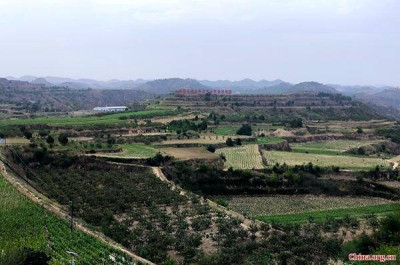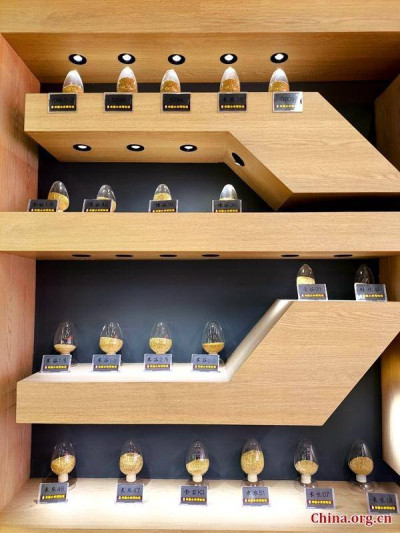來源: 編輯:匿名 發表時間:2024-06-28 00:12:52 熱度:15
The tradition of millet cultivation dates back more than 5,000 years in Mizhi county of Yulin city, northwest China's Shaanxi province. Known throughout the country for its glutinous texture, aromatic flavor, and high nutritional value, Mizhi millet has become a flagship product of the region.

Farmlands in Mizhi county, Yulin city, northwest China's Shaanxi province, June 26, 2024. [Photo by Xu Xiaoxuan/China.org.cn]
Li Rui, director of the agriculture bureau of Mizhi county, noted the significant shift from traditional practices: "Previously, millet farming was at the mercy of the elements, a considerable challenge due to our county's limited rainfall. However, the adoption of dry farming techniques has revolutionized this dependence, ensuring a reliable water supply during the millet's critical growth phases."
Mizhi has developed an innovative irrigation system that collects rainwater in ditches, uses solar power to pump the water, stores it in flexible pipes, and then delivers it directly to the plants' roots through a network of underground pipes. This approach has enabled the use of surplus rain in times of drought.
Jiang Dehuai, a local farmer from Gaoxigou village in Mizhi county, told China.org.cn, "Adopting this model has not only reduced our planting costs but also significantly boosted our yields, effectively doubling my income from farming."
In 2022, millet yield under the integrated rainwater harvesting model reached 400 kilograms per mu (0.067 hectares), a 40% increase compared to previous years. The new model also reduced water usage by 30% per mu and increased net income by 1,000 yuan ($140) per mu.
Mizhi's commitment to sustainable millet production extends beyond water conservation. The county has also embraced techniques that reduce chemical fertilizer use and enhance efficiency while adopting eco-friendly pest control methods.
"We've established five 10,000-mu demonstration zones and 15 1,000-mu demonstration fields. In 2023, the county's millet planting area reached 150,000 mu, with a total yield of 36,000 tons," Li noted.

Millet varieties on display in a millet-themed museum in Mizhi county, Yulin city, northwest China's Shaanxi province, June 26, 2024. [Photo by Xu Xiaoxuan/China.org.cn]
In 2021, Mizhi millet was recognized by the Ministry of Agriculture and Rural Affairs as a national rural specialty product.
Gao Yuan, deputy director of Mizhi county, highlighted the county's comprehensive approach to millet production. "Mizhi has focused on the entire millet industry chain, developing more than 10 types of intensively processed products, such as millet tea, millet rice crust, millet coffee, millet vinegar, and millet wine," Gao said.
In 2023, the county's annual millet processing capacity surpassed 180,000 tons, generating a value of 750 million yuan and creating over 700 jobs.
Mizhi county, a national model for integrating e-commerce into rural areas, has established a county-level e-commerce public service center that includes exhibition, sales, live broadcasting, warehousing, and incubation facilities. In 2023, online sales revenue of millet-based agricultural specialty products surpassed 200 million yuan.
Follow China.org.cn on Twitterand Facebookto join the conversation.
ChinaNews App Download
標題:Innovation breathes new life into ancient millet farming in China\'s Mizhi county
地址:https://www.vogueseek.com/post/73640.html
鄭重聲明:本文版權歸原作者所有,轉載文章僅為傳播信息之目的,不構成任何投資建議,如有侵權行為,請第一時間聯絡我們修改或刪除,多謝。
